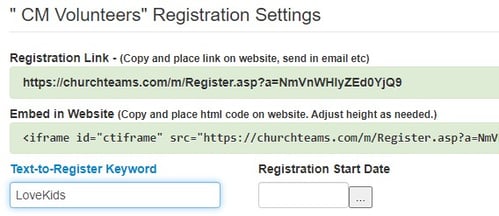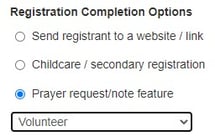 Everything related to volunteers starts by creating a pool. This is the gathering place from which a volunteer pipeline flows.
Everything related to volunteers starts by creating a pool. This is the gathering place from which a volunteer pipeline flows.
You might refer to it as a list of potential volunteers that you create before starting to recruit. If you would have asked me at one point in my ministry what it is, I would have called it the directory. The directory is still a pretty common tool for recruiting volunteers. So are sticky notes. But there is a better way.
If you are using software to help with this, it probably requires running a report to see a list. In Churchteams, the pool, like everything else that involves more than one person, starts by creating a group.
Once you have created your "Potential Volunteers" group, the next step is to begin filling it with people. Here are 4 ways your church software can help you do this and how to do each one in Churchteams.
- Direct registration.
- Direct reports.
- Indirect reports.
- Indirect registration.
Direct registration. This approach is by far the most common. Sometimes it is a part of an intentional communication system. At other times, it is more of a reaction to an urgent need. It involves using some or all of the normal channels for communication to urge volunteers to sign up. The call to action is a link or Text-to-Church Keyword built within Churchteams to capture responses. As people respond the pool begins to fill.

Direct reports. Many churches give people an opportunity to identify their ministry interests and spiritual gifts as part of their membership process. Sometimes ministry interests and similar responses are regularly available on weekly connection cards. From whatever source, these populate corresponding fields in your church database. One of the best ways to use this data is to create a Member listing report filtered by the fields that contain these responses. Run and review the list with any other information that might be helpful like "Join Date" or "Current Groups". Tweak the filters to get the results that look most useful based on your data. Once you've done that use the "Add People To Group" report with that set of filters to fill your recruiting pool.

Indirect reports. The difference between indirect reports and direct reports is that you choose to filter by data other than direct responses to a "ministry interests" or "spiritual gifts" field. Use the same process of creating a list that gives you other information and filters that help you find potential volunteers. Except this time filter by other field that help you indirectly find potential volunteers. Here are some examples:
- Church member not currently in a serving group.
- Parents of kids in children's ministry who are members not currently serving.
- Regular church or small group attenders not currently serving.
- Consistent givers not currently serving.
- Members not serving in a Sunday morning capacity.
When you find a list you like, use the same filters and the "Add People to Group" report.

Indirect registration. The last way to fill your "Potential Volunteers" pool involves personal interactions and referrals. As pastors and staff interact with people and discover that they might be a good candidate for a volunteer position, the pastor / staff person logs into Churchteams on their phone, looks up the person and from their member profile page puts them in the pool perhaps adding some details in notes.

Another way to collect indirect registrations is by getting your current volunteers to give you referrals. You can create a group or "Pool" for them. I would ask them to register their friends' name and email and then add a required note type for them to enter in their name and any comments about the friend they are referring. This is on the Registration Settings page.

If you are not familiar with our idea of using groups as pools, stick with me. I will continue building on this idea and think you will find it an efficient and effective approach to building out a volunteer system that really works.



